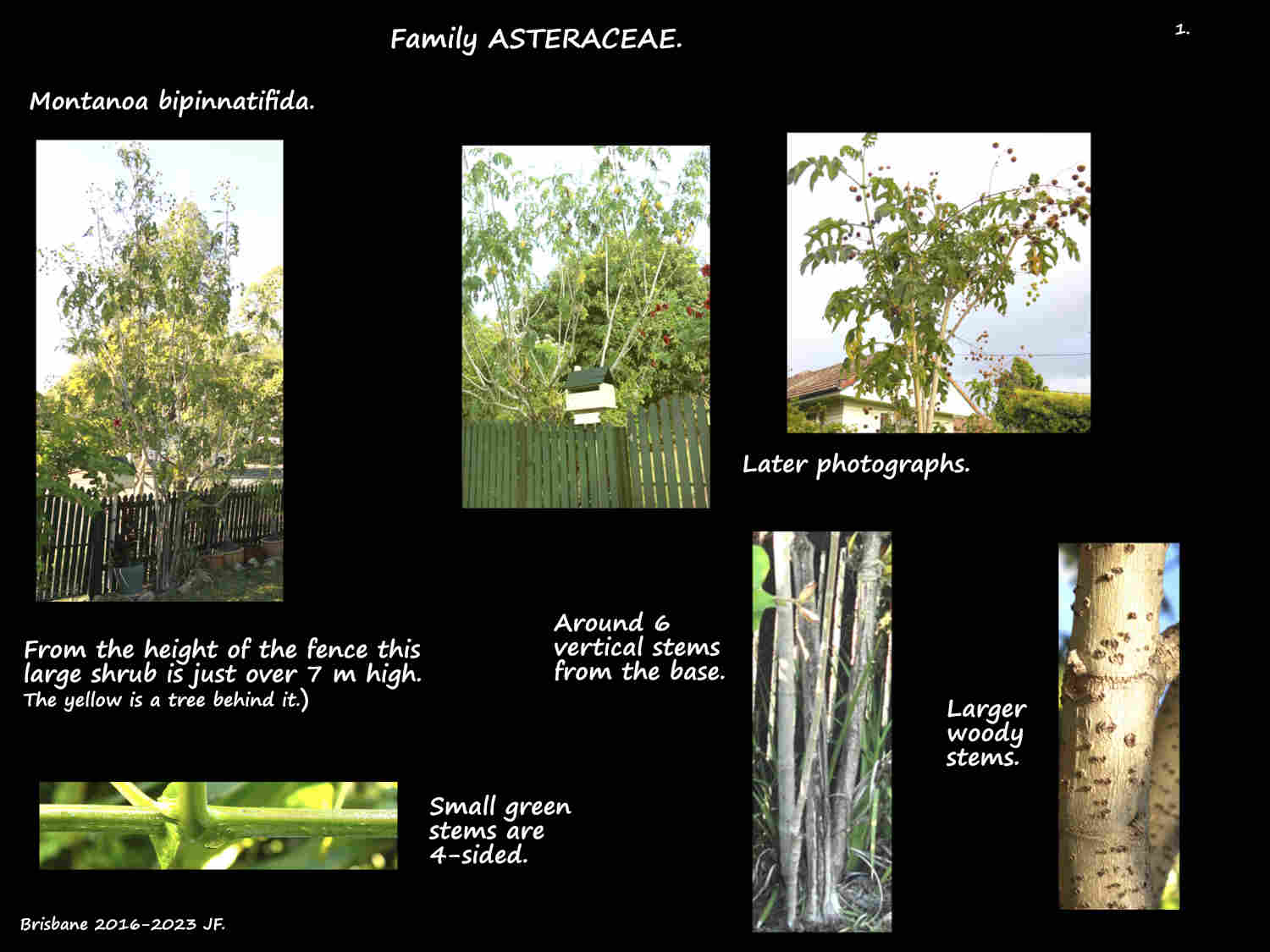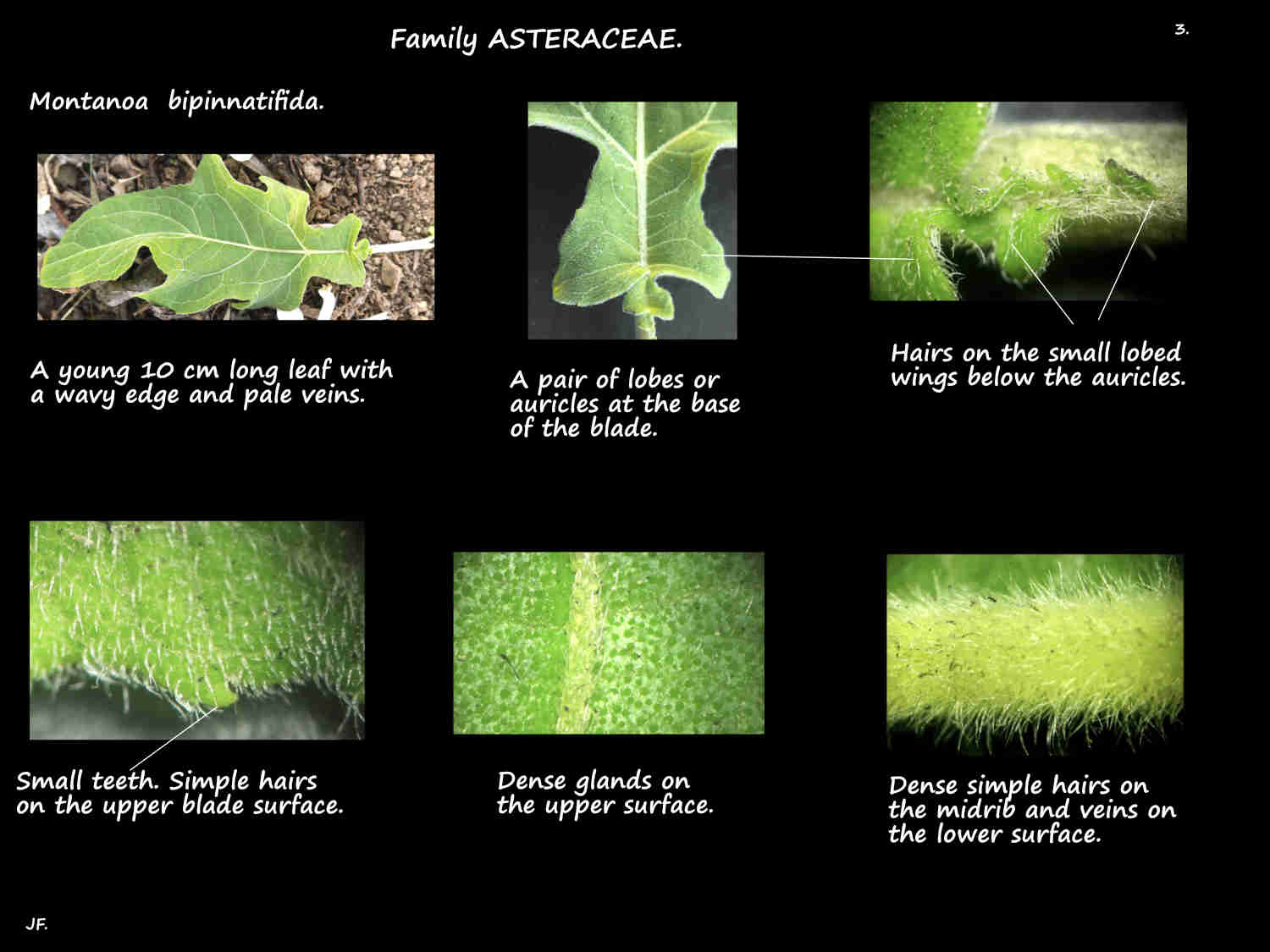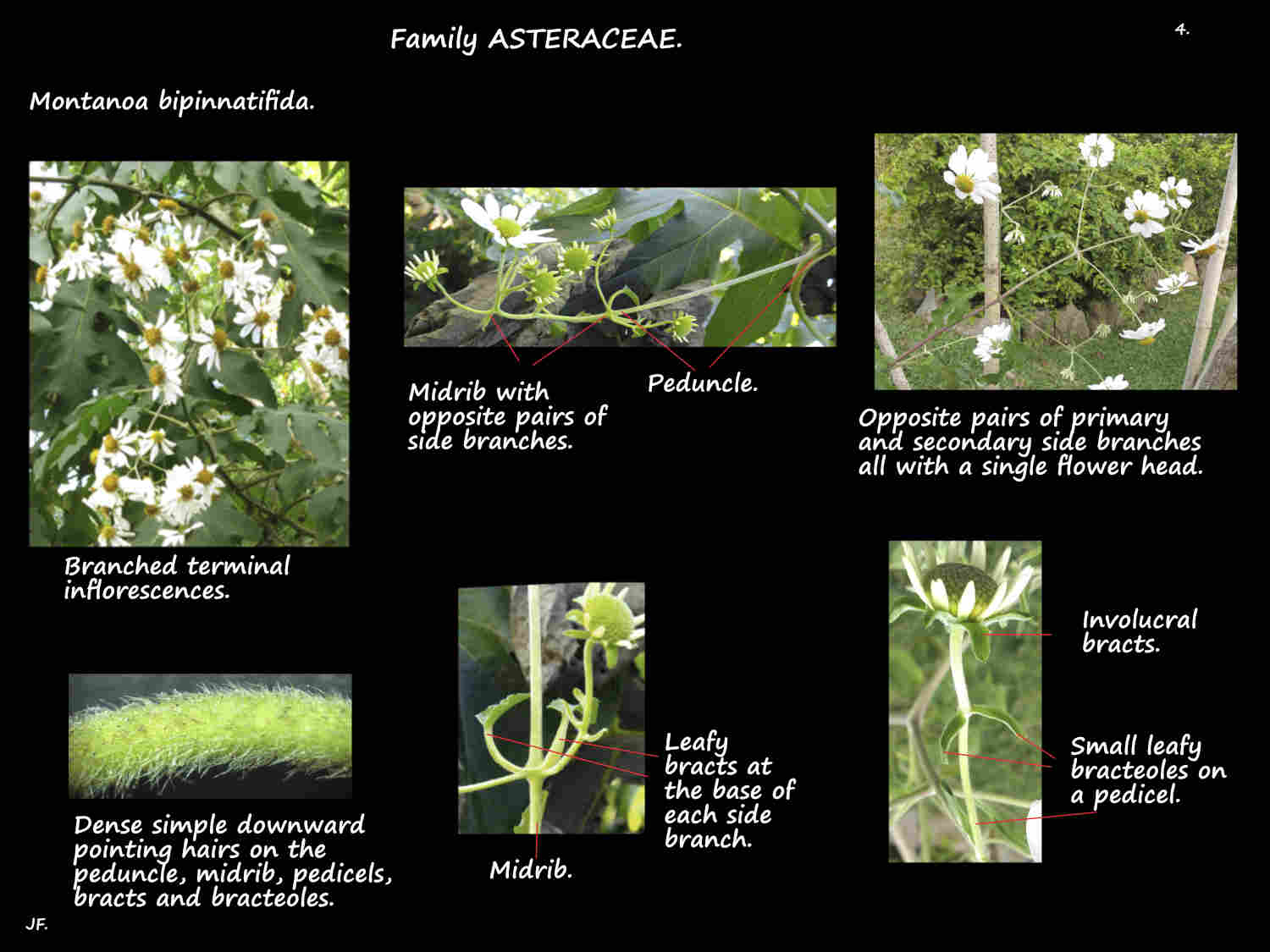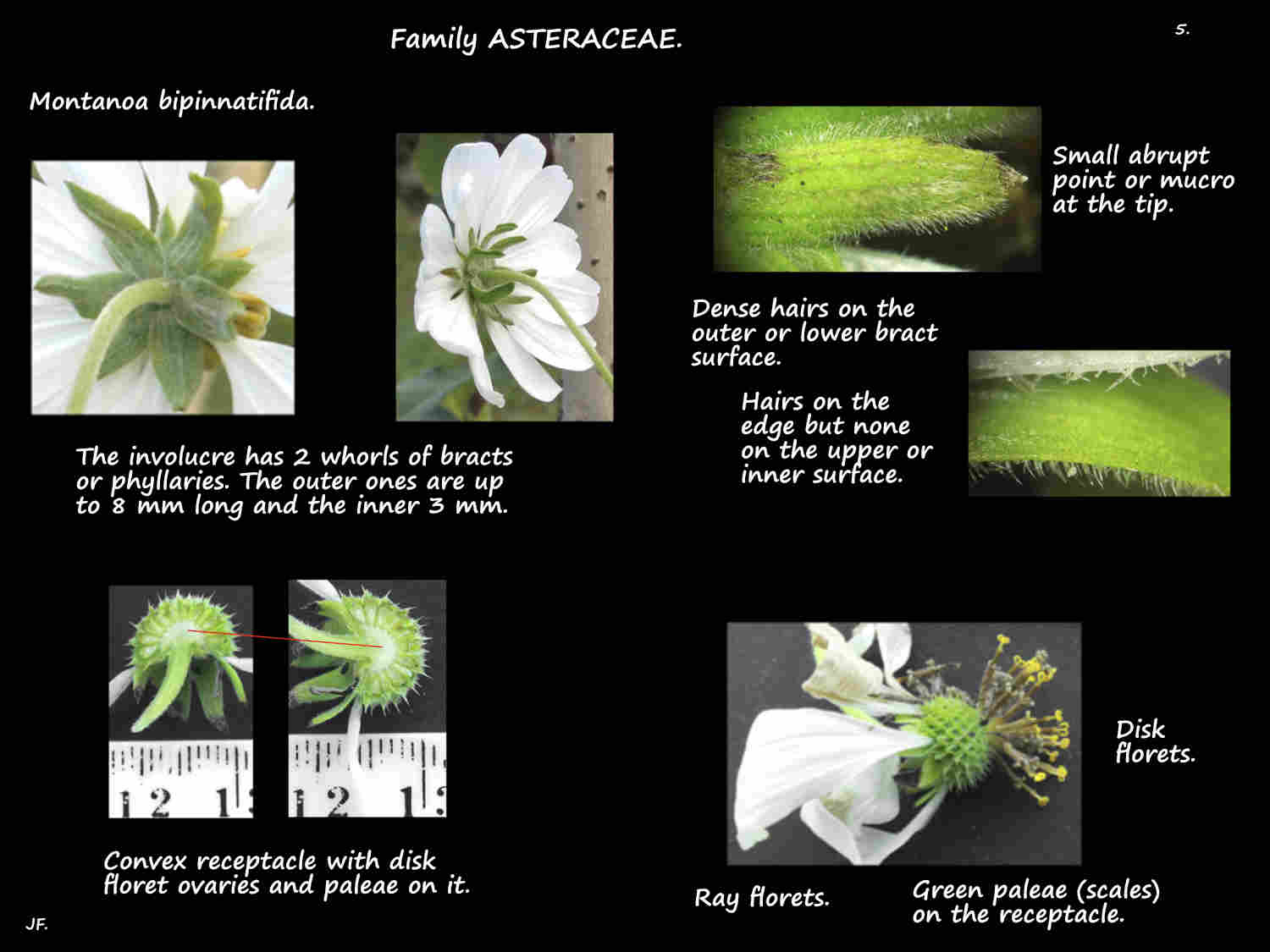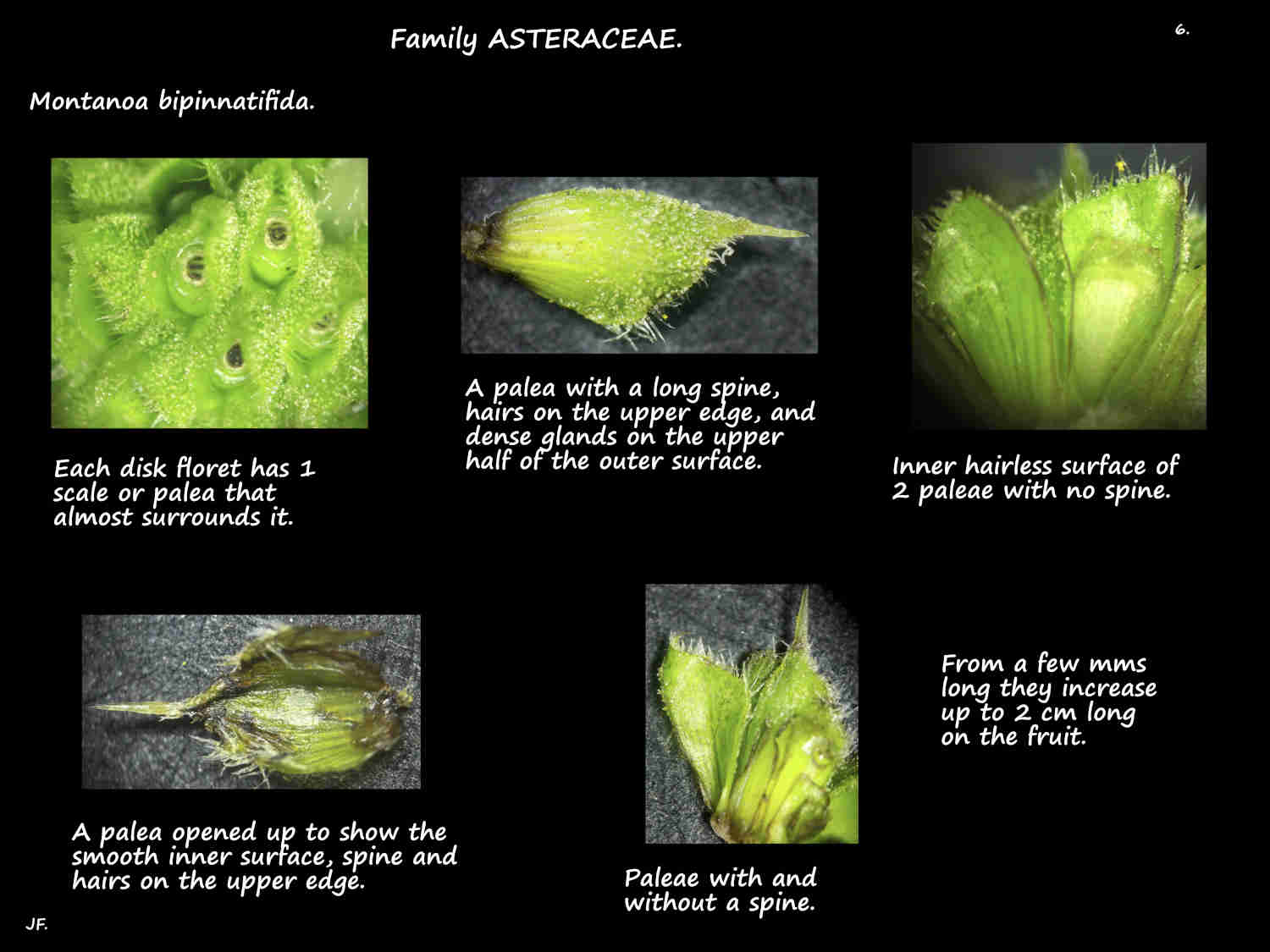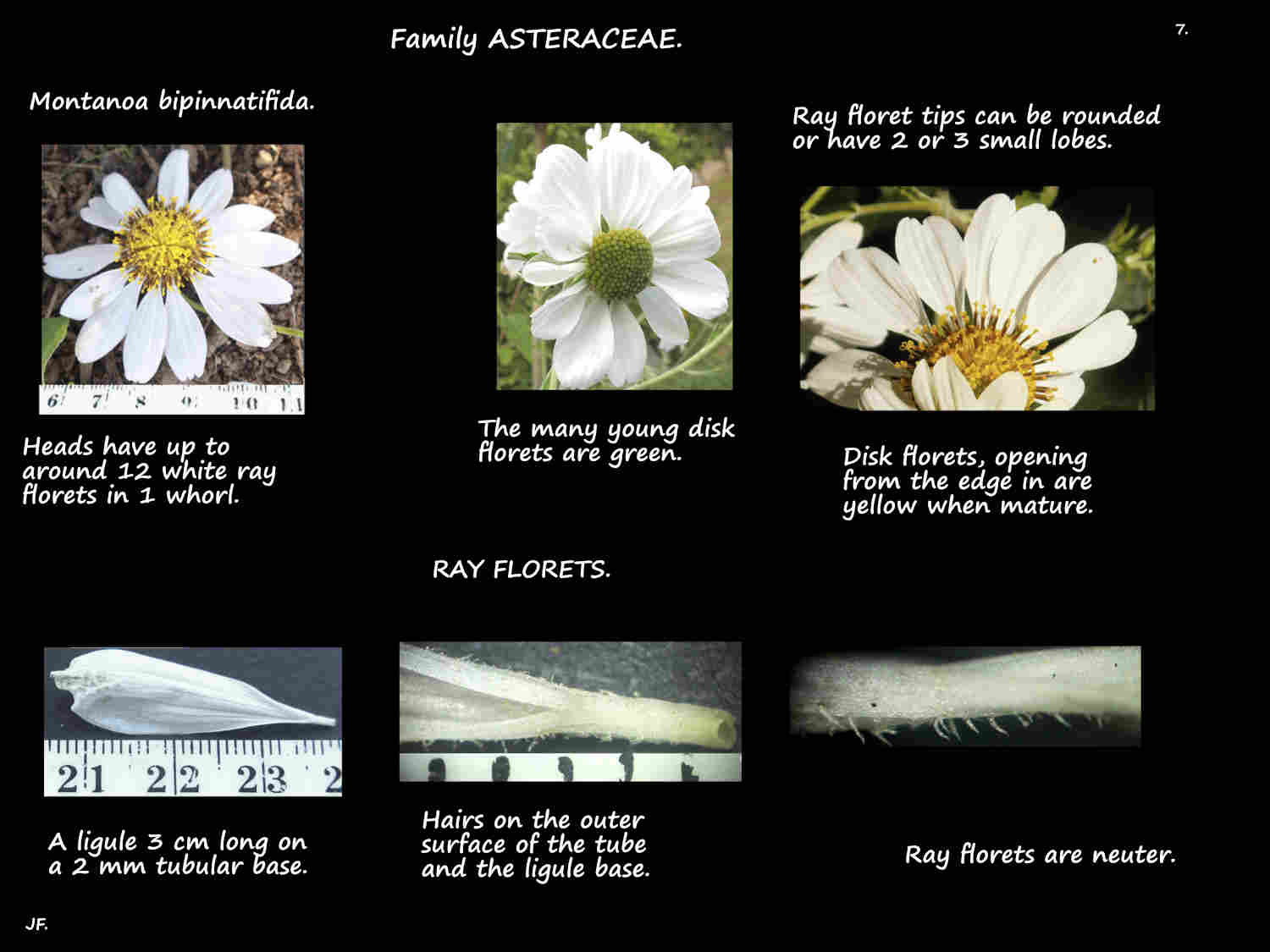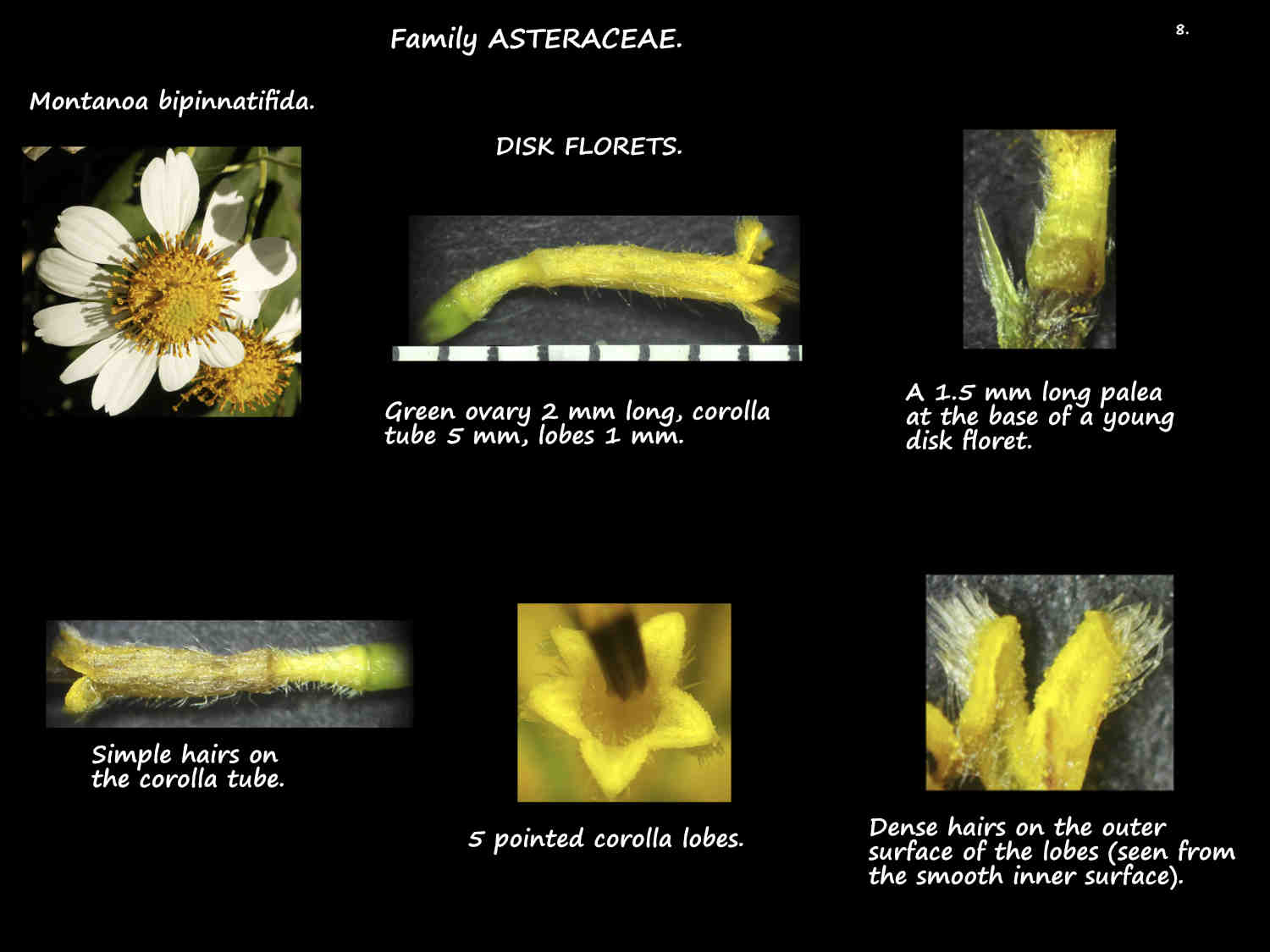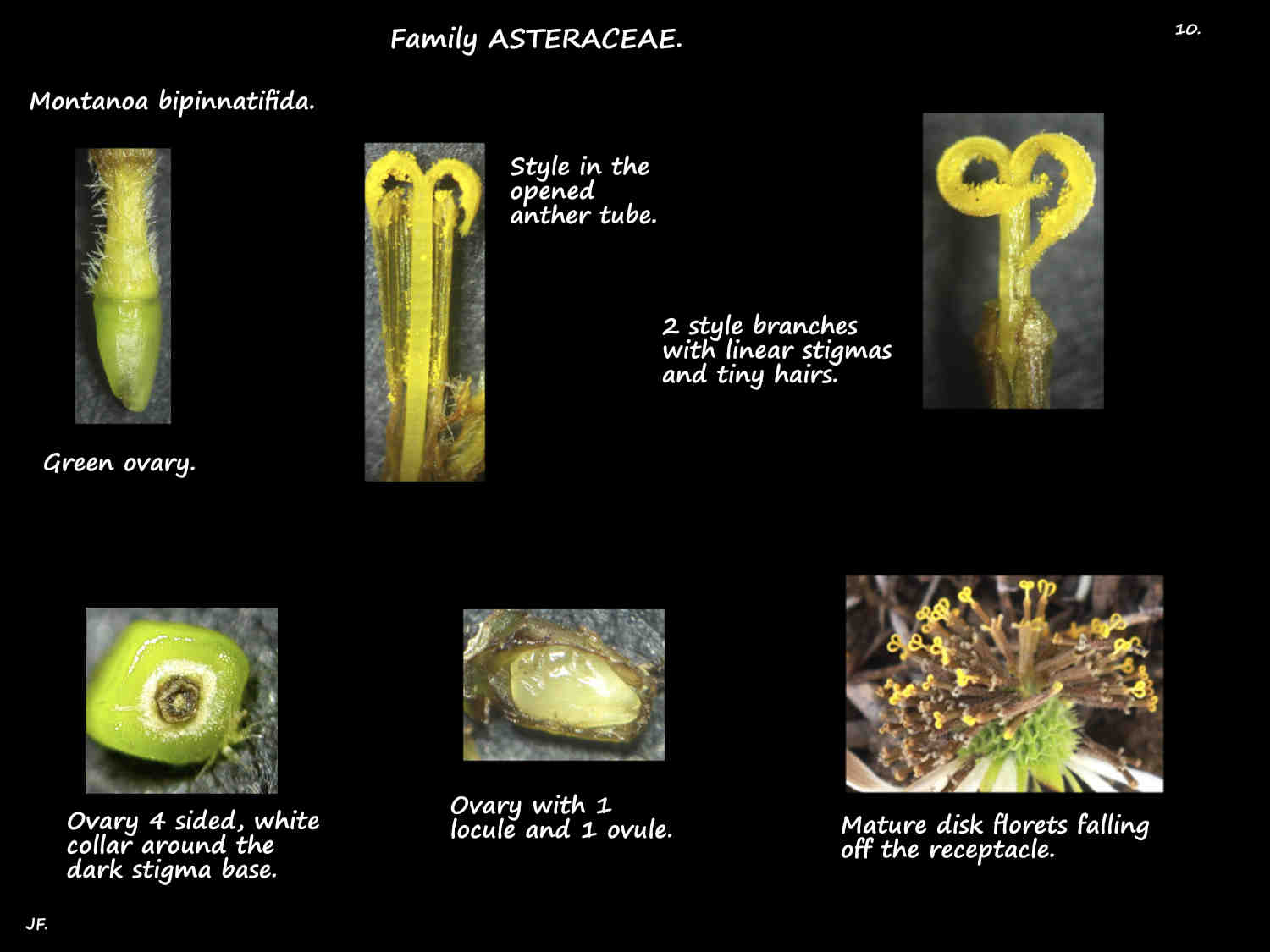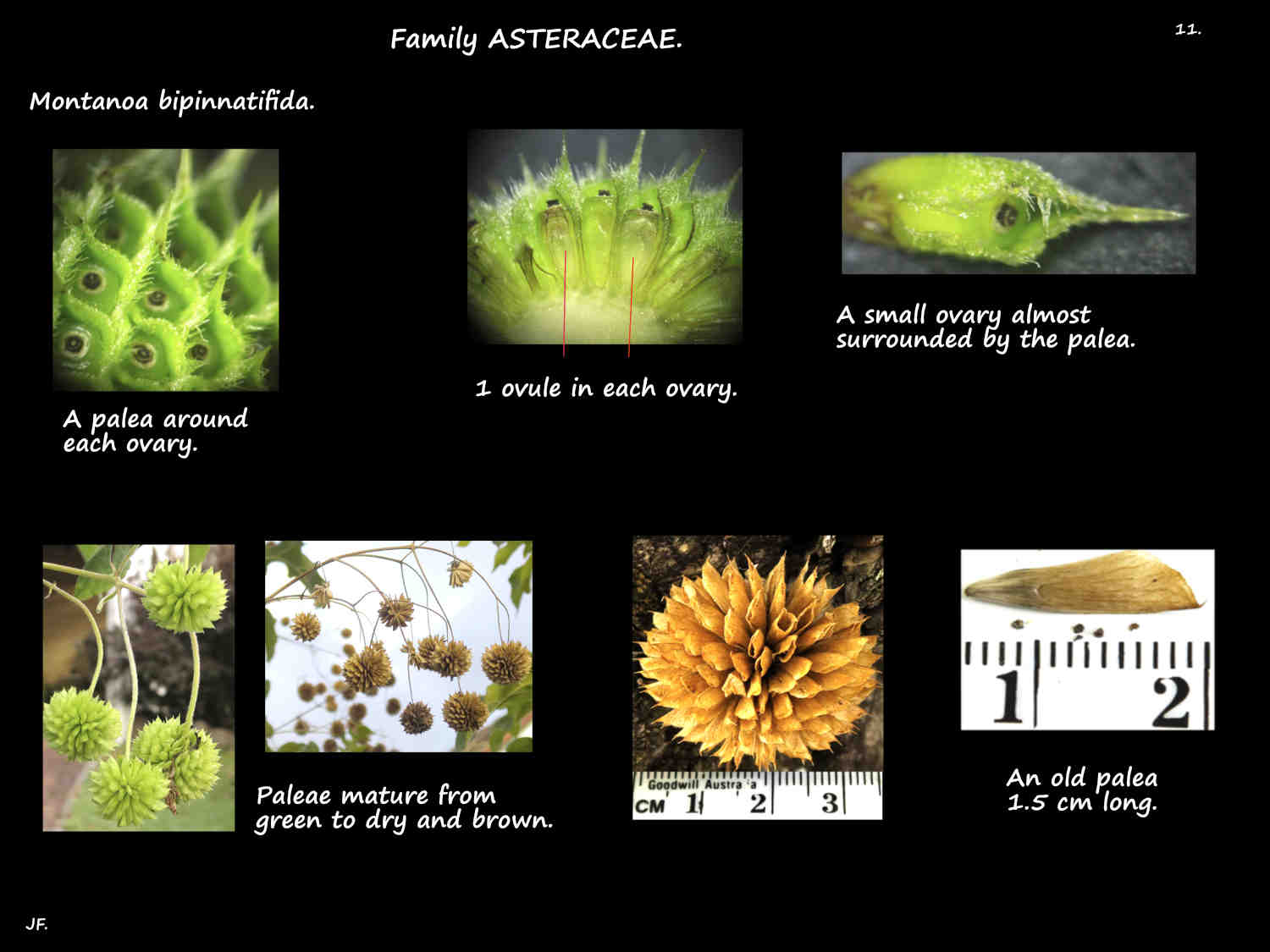Montanoa bipinnatifida.
The Mexican Tree Daisy from southern Mexico is sparsely naturalised in S. E. Queensland but rarely seen in gardens here.
Montanoa hibiscifolia, also sparsely naturalised in Queensland and New South Wales is very similar to M. bipinnatifida.
NSW has them as a single species with M. bipinnatifida being a synonym of M. hibiscifolia.
Flora of Australia Vol. 37 recognises both distinguishing them by the leaves.
M. bipinnatifida has pinnate or bipinnate leaves and M. hibiscifolia irregularly palmate ones.
M. bipinnatifida are evergreen perennial shrubs around 3 m high or small trees up to 10 m.
The large pale grey woody stems are cylindrical and smaller hairy stems may be 4-sided.
Leaves are on a hairy petiole up to 20 cm long with a pair of small leafy lobes at the base.
Lobes (auricles), around 1.5 cm wide and slightly shorter have simple hairs.
The base of the blade runing down the sides of the petiole may have small lobes on it.
The ovate, widely ovate to oblong blades are 30 to 40 cm long and around 10 cm wide.
The edge is typically once divided (pinnate) into oblong lobes with a round or pointed tip.
The lobes are sometimes irregular rather in strictly opposite pairs.
Lobe edges may be slightly lobed themselves (bipinnate) and there may be small teeth.
The upper surface has dense hairs and glands and the lower has hairs mainly on the midrib and veins.
The terminal inflorescences are on a hairy and glandular peduncle.
The main midrib has opposite pairs of side branches each of which may branch again.
Each side branch has a single flower head on a hairy and glandular stalk or pedicel.
There are leafy bracts at the base of each branch and small bracteoles on the pedicels.
Each inflorescence can be up to 25 cm across, young heads around 2.5 cm and mature ones up to 4 cm.
There are around 4 bracts or phyllaries, of different lengths in each of the 2 whorls in the involucre.
The lance-shaped to ovate bracts, from 3 to 8 mm long have a pointed tip.
There are small hairs on the edges, dense ones on the outer surface and a few or none on the inner.
The receptacle holding the florets is convex to conical.
The green scale or palea at the base of each disk floret can have a flattish tip or a long spine.
There are hairs on the edge, glands and hairs on the centre and tip of the outer surface and the inner surface is smooth.
From 1 to 2 mm long they grow to around 2 cm long around the fruit and become papery.
There are around 10 white ray florets with a tubular base 1 to 2 mm long and a ligule 2 to 3 cm long.
The tip of the ligule can be pointed or have 2 or 3 small lobes.
The outer surface of the tube has some hairs and there may be hairs and glands on the outer surface of the ligule.
The around 100 green then yellow disk florets have a tubular base around 5 mm long with 5 pointed lobes around 1 mm long.
There are scattered hairs on the outer surface of the tube and dense ones on the lobes.
The 5 free stamen filaments are around 5.5 mm long and the 2.5 mm long anthers are loosely fused.
The anthers have a pointed apical appendage less than 1 mm long with glands on the outer surface.
The inferior ovary, with a single ovule has a style nearly 1 cm long with a linear yellow stigma 2 mm long on each of the 2 branches.
The fruit are black or brownish-black cypselae loosely called achenes.
They are obovate, around 3.5 mm long, 2 mm wide, 4-ribbed and have no hairs.
The phyllaries may curl back or fall off.
J.F.
